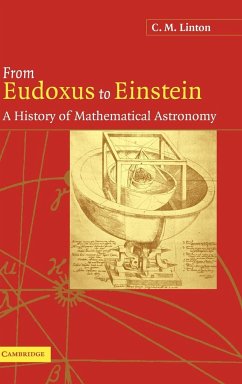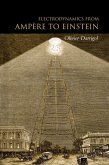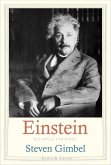Describes development of theories of planetary motion, emphasizing interaction between progress in mathematics and astronomy.
Since man first looked towards the heavens, a great deal of effort has been put into trying to predict and explain the motions of the sun, moon, and planets. Developments in man's understanding have been closely linked to progress in the mathematical sciences. Whole new areas of mathematics, such as trigonometry, were developed to aid astronomical calculations, and on numerous occasions throughout history, breakthroughs in astronomy have only been possible because of progress in mathematics. This book describes the theories of planetary motion that have been developed through the ages, beginning with the homocentric spheres of Eudoxus and ending with Einstein's general theory of relativity. It emphasises the interaction between progress in astronomy and in mathematics, showing how the two have been inextricably linked since Babylonian times. This valuable text is accessible to a wide audience, from amateur astronomers to professional historians of astronomy.
Table of content:
Preface; 1. Introduction; 2. Spheres and circles; 3. The Ptolemaic universe; 4. Developments in geocentric astronomy; 5. The heliocentric universe; 6. Tycho Brahe, Kepler and the ellipse; 7. Galileo, the telescope, and Keplarian astronomy; 8. The universal theory of gravitation; 9. Celestial mechanics; 10. The asteroids and the outer planets; 11. New methods; 12. Mercury and Relativity.
Hinweis: Dieser Artikel kann nur an eine deutsche Lieferadresse ausgeliefert werden.
Since man first looked towards the heavens, a great deal of effort has been put into trying to predict and explain the motions of the sun, moon, and planets. Developments in man's understanding have been closely linked to progress in the mathematical sciences. Whole new areas of mathematics, such as trigonometry, were developed to aid astronomical calculations, and on numerous occasions throughout history, breakthroughs in astronomy have only been possible because of progress in mathematics. This book describes the theories of planetary motion that have been developed through the ages, beginning with the homocentric spheres of Eudoxus and ending with Einstein's general theory of relativity. It emphasises the interaction between progress in astronomy and in mathematics, showing how the two have been inextricably linked since Babylonian times. This valuable text is accessible to a wide audience, from amateur astronomers to professional historians of astronomy.
Table of content:
Preface; 1. Introduction; 2. Spheres and circles; 3. The Ptolemaic universe; 4. Developments in geocentric astronomy; 5. The heliocentric universe; 6. Tycho Brahe, Kepler and the ellipse; 7. Galileo, the telescope, and Keplarian astronomy; 8. The universal theory of gravitation; 9. Celestial mechanics; 10. The asteroids and the outer planets; 11. New methods; 12. Mercury and Relativity.
Hinweis: Dieser Artikel kann nur an eine deutsche Lieferadresse ausgeliefert werden.







